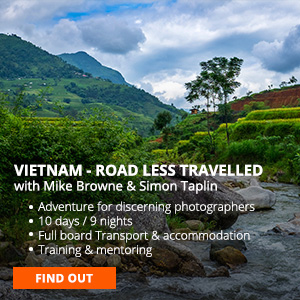Negative Space
Using negative space in photography is something which I know many photographers find confusing. What is negative space? Where is negative space? And the most common question - When should I use it?
Negative space in photography refers to an empty area around the main subject of an image which emphasises that subject - despite making it smaller in the overall framing or composition of the image.
This seems to be a contradiction. Why would making the subject of an image smaller cause it to stand out more? I expect there all kinds of essays on the theory of negative space when composing a picture but all I know is it works and is perfect for brings a senses of peace and tranquillity to an image.
Now you can't use it all the time because there are circumstances where there isn't any negative space available. If you're in a forest or crowded city street you're not likely to find much if any space - negative or otherwise. Chances are if you make the subject small in the frame in these circumstances your photo will just be too busy and no one will know where to look or what the composition is all about.
As for when to use negative space, this is a creative call for you as the photographer. There is no right or wrong - just waht works to achieve what you want to achieve verses what doesn't. To find this for yourself it takes practise so don't be afraid to try things and if it doesn't look how you wanted, analyse the image and ask yourself why? Then try again somewhere else.
Negative space can be virtually empty as with leaves against a blue sky. Or you can use something with a graphic shape which is the opposite of your subject - like the wedding couple above. They are soft, human and have a natural shape but the negative space above them is hard, man made and has regularity to it.
Be careful when you compose this kind of image and make sure the graphic part of the image fits the frame uniformly. If your uprights are wonky or the spaces either side are not even it'll look messy so take your time.











































